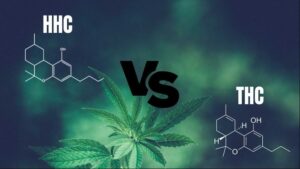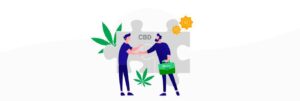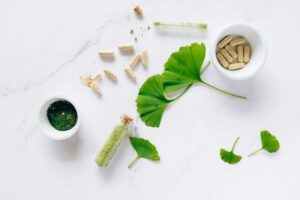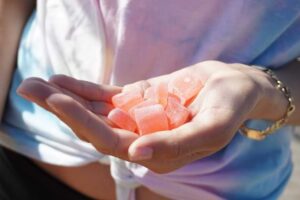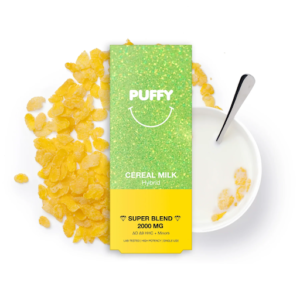
CBD liquid extract is basically a concentrated form of CBD that’s extracted from the cannabis plant. It’s called “liquid” extract because it’s typically a liquid that can come in different forms, like oil, tincture, or vape liquid.
CBD liquid extract can come in various forms, including oil, tincture, or vape liquid. It is often used for medicinal purposes, as CBD has been shown to have potential therapeutic benefits, such as reducing anxiety, relieving pain, and improving sleep.
The extraction process for CBD liquid extract involves using a solvent to dissolve the CBD and other plant compounds from the plant material. This results in a highly concentrated liquid extract that can be further refined to remove any impurities and unwanted compounds.
CBD liquid extract can be consumed in various ways, such as sublingual drops, capsules, or by vaping. When taken sublingually, the extract is placed under the tongue and absorbed into the bloodstream through the mucous membranes. When consumed via vaping, the extract is heated and inhaled into the lungs, where it is quickly absorbed into the bloodstream.
It’s important to note that CBD liquid extract is legal in many countries, but regulations may vary. It’s important to research and understands the laws and regulations in your country or region before purchasing or using any CBD products. Additionally, it’s always advisable to consult with a healthcare professional before using CBD, especially if you are taking any medication or have any underlying health conditions.
The Science Behind CBD Liquid Extract
CBD works in the body by interacting with the endocannabinoid system (ECS), which is a complex network of receptors and signaling molecules that helps regulate many physiological processes, including mood, pain, and appetite.
Endocannabinoids, receptors, and enzymes are the three primary parts of the endocannabinoid system (ECS). Endocannabinoids are molecules that are naturally produced by the body, and they bind to the ECS receptors to help regulate various functions. The two main receptors in the ECS are CB1 and CB2, and they are found throughout the body, including in the brain, nervous system, immune system, and digestive system.
When CBD is consumed, it interacts with the ECS by indirectly stimulating the receptors and increasing the levels of endocannabinoids in the body. This can help regulate various functions, such as reducing inflammation and pain, improving mood and anxiety, and promoting overall homeostasis (balance) in the body.
One of the main ways that CBD works in the body is by inhibiting the breakdown of anandamide, which is a naturally occurring endocannabinoid that helps regulate pain, mood, and appetite. By inhibiting the breakdown of anandamide, CBD can help increase its levels in the body, leading to potential therapeutic benefits.
CBD has also been shown to interact with other receptors in the body, such as serotonin receptors, which play a role in regulating mood and anxiety. By modulating these receptors, CBD can potentially help reduce symptoms of anxiety and depression.
Additionally, CBD has been shown to have antioxidant and anti-inflammatory properties, which can help reduce oxidative stress and inflammation in the body. This may have potential benefits for conditions such as arthritis, neurodegenerative diseases, and cardiovascular disease.
CBD Liquid Extract Dosage
CBD liquid extract, like other CBD products, does not have a universally recommended dosage, as the appropriate dosage can vary depending on a variety of factors, such as the individual’s weight, age, metabolism, and desired effects.
When determining the appropriate dosage of CBD liquid extract, it’s important to start with a low dose and gradually increase the dosage as needed. This is because CBD can affect each individual differently, and it may take some time to find the optimal dosage for each person.
A general rule of thumb for CBD dosing is to start with a dose of 1-6 milligrams of CBD for every 10 pounds of body weight. For example, a person who weighs 150 pounds may start with a dose of 15-90 milligrams of CBD per day.
It’s also important to consider the potency of the CBD liquid extract, as this can affect the appropriate dosage. Most CBD liquid extracts will list the concentration of CBD in milligrams per milliliter (mg/ml) on the label. For example, a 30ml bottle of CBD liquid extract with a concentration of 1000mg CBD would contain approximately 33mg of CBD per milliliter.
When using CBD liquid extract for the first time, it’s recommended to start with a low dosage, such as 10-20mg per day, and gradually increase the dosage over time as needed. It’s also important to pay attention to any potential side effects, such as drowsiness, dry mouth, or nausea, and adjust the dosage accordingly.
It’s also important to note that the effects of CBD can be influenced by other factors, such as the method of consumption (e.g. sublingual, oral, inhalation), the time of day, and the individual’s diet and lifestyle habits. Therefore, it’s important to approach CBD dosing with a personalized and holistic approach and consult with a healthcare provider if needed.
In Summary
Determining the appropriate dosage of CBD liquid extract requires a personalized approach, taking into consideration factors such as weight, age, and desired effects. Starting with a low dosage and gradually increasing the dosage over time can help find the optimal dosage for each individual while paying attention to any potential side effects and other influencing factors.


